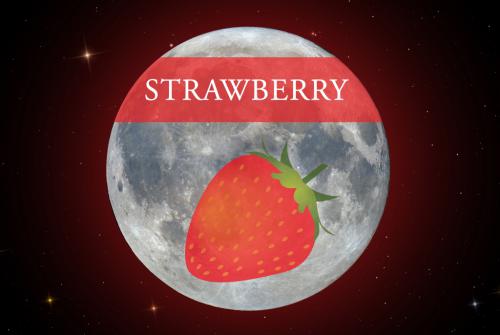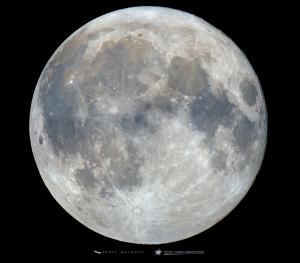Celebration of Space - June 21, 2024
At 9:11 pm ET this evening, June 21, 2024, the Moon will orbit into a position where it becomes aligned with the Earth and Sun, on the opposite side of Earth than the Sun. This is the full lunar phase or full Moon. The June full Moon is of particular interest because it is the lowest full Moon in the sky for the year. This is because the Moon orbits Earth near the ecliptic, which is the path the Sun takes across the sky. On the Summer Solstice, which was on June 20th this year, the ecliptic will be at its highest point in our daytime sky, consequently the ecliptic will be at its lowest in the nighttime sky for the year on that day. Additionally, the Moon orbits the Earth within 5.1° of the ecliptic, which will place the Moon anywhere from 5.1° above the ecliptic to 5.1° below. Tonight the Moon will be located at 5° below the ecliptic, which will place the full Moon super low in the nighttime sky. Low enough to appear a bit yellow in hue. With all the increase in surface level ozone this week, the Moon will appear even more of a ruddy hue.
Like all full lunar phases, the June Moon has a moniker, and commonly goes by the name The Full Strawberry Moon. Even though the Moon will be super low on the horizon, and may appear to be yellow-orange in color, this has nothing to do with the name. According to the Old Farmer’s Almanac, the June Moon gets its name from the strawberry blooms that ripen in June. Other names the June Moon go by are: The Blooming Moon, The Birth Moon, and the Hatching Moon. Alternative names are The Honey Moon, and The Mead Moon.
Regardless of what you call the June Moon, it will be a spectacular sight to see, being that it is so low in the sky. In fact, it’s one of the lowest full Moon’s in years. Step outside around 9:00 pm ET tonight, and make sure you have a low view of the SE horizon. The Strawberry Moon will rise slowly and will look very large and rather red. The size is just an illusion, and the color is due to Earth’s atmosphere. Take another chance around 10:00 pm to step outside and catch a view of the Moon, as it will still look yellowish and larger than normal. For those of you that are convinced that the Moon is huge, hold out your hand at arm’s length and try to cover the Moon with your pinky finger, and you will see that the Moon is the same size as it is any other place or day in the sky. Enjoy the Strawberry Moon of June!
At Frosty Drew Observatory, we field a lot of questions from the general public. Many of these questions are all over the place, though we do have a series of questions that we hear repeatedly. One of our most popular questions is “When can I see the Milky Way?” To best answer this question, Frosty Drew has created special events that occur on summertime Saturday nights themed on viewing the Milky Way, which is strikingly visible over Ninigret Park, home to Frosty Drew Observatory and Science Center. The event is called Celebrate the Milky Way, and is scheduled on the Saturday nights that we think will bring the best views of the Milky Way to our location. The first Celebrate the Milky Way event of 2024 will occur on Saturday, July 6, 2024, which is about two weeks out. Due to conflicting events in Ninigret Park, we will only host one Celebrate the Milky Way event in 2024, but may try to squeeze in another. So make plans to attend on July 6th: https://frostydrew.org/events.dc/show/event-1422/.
Now that the Summer Solstice has passed, it is officially summer in the Northern Hemisphere. At Frosty Drew this is always a tough time for our astronomers because of the tiny window of usable night sky that we have every night. Our best viewing on site happens after astronomical twilight ends and before it kicks back in before predawn. During the winter we have over 12 hours of nighttime to get things done, but in June, we are talking about 4.5 actually usable hours of darkness. Tonight, astronomical twilight ends at 10:36 pm ET, and kicks back in tomorrow morning at 3:00 am ET. Even though the nighttime periods are super short, on the nights without the Moon the Milky Way is an amazing view. As we move through summer the nights will progressively get longer now that we are past the Summer Solstice, and the Milky Way will become even more accessible to viewers. So keep your eyes to the sky!
- Author:
- Scott MacNeill
- Entry Date:
- Jun 21, 2024
- Published Under:
- Scott MacNeill's Columns




